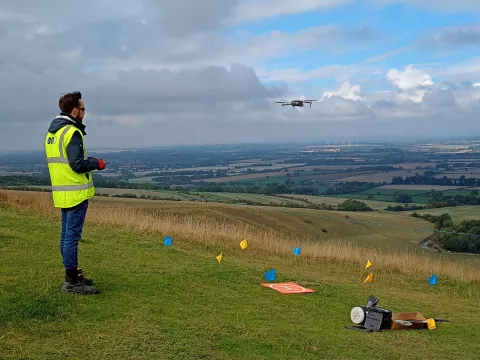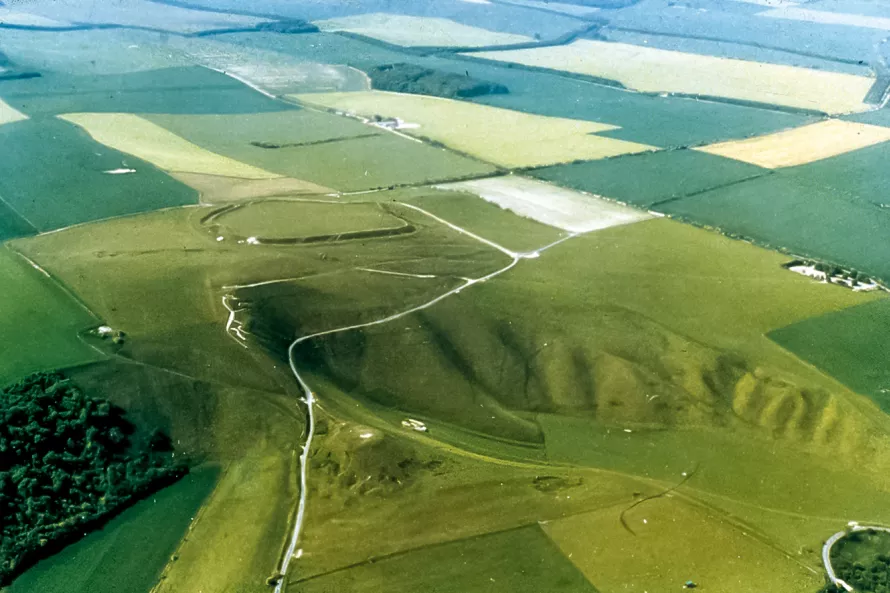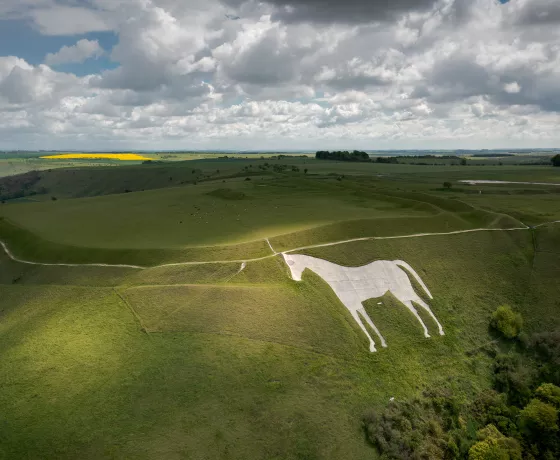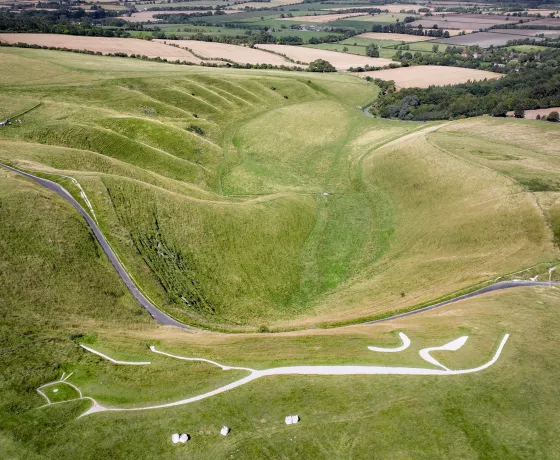Nearly 45 years ago we spent a weekend with measuring tapes in the wind trying to tie the horse down on to paper. Hand survey can be difficult at times but on the precipitous topography and gusty hillside, at Uffington, it was nigh impossible. We have a great admiration for those who managed to produce credible measured drawing of the Horse. One always needs a control to measure change against, and an accurate drawing of the current Horse’s state is a necessary starting point.
It is only really from the late18th and early 19th centuries that we begin to get true representations of the Horse – a purportedly ‘very accurate drawing’ by Edmonds c 1835 is the pick of the crop. Reliable measured drawing appeared in the twentieth century with the Flindars Petrie’s measured survey of 1926 and then a ‘Ministry of Works’ survey in 1937. These, given the short time span between, are reassuringly similar. Quietly passing over our attempt in 1980, technology subsequently came to our aid. English Heritage undertook an aerial survey in 1989 (a technology developed from the second world war – and well beyond the costs of local archaeologists at the time) as part of the wider research works we undertook in the early 1990s. This survey covered the wider landscape including the Horse was small scale stuff, but very accurate. What we needed now was an up-to-date accurate survey to act as our control.

The more recent advent of drones combined with photogrammetry to produce detailed survey has revolutionised the discipline and allowed OA to become experts in what is now a very useful and indispensable procedure for archaeologists. The concern about the changing appearance of the Horse led to the idea of combining the use of a drone survey with the digital comparison of the earlier measured surveys (of 1926, 1937 and 1989). This would hopefully give a clear and measurable indication of how much the Horse was shrinking.
After an initial aborted attempt in 2020, thanks to COVID-19, we were able to get in the air over the Horse (with the required permission from the National Trust) in 2022. Thanks to the technical wizardry of OA’s geomatics department (Matt Bradley and Ben Brown) not only was the Horse surveyed and overlaid with the earlier surveys, but we were given a bonus of videos and images.
Our first concern was to determine how accurate the earlier surveys were, mindful of the hazards of terrestrial based hand-measurement, and the lack of any fixed points. We need not have worried. While there was remarkable internal consistency between the surveys, clear chronological differences were evident. We had also studied the archive of old photos, both terrestrial and aerial. These, in a less quantifiable way, told the same story. The aerial photographic coverage was the greatest help as this coverage dates back almost a hundred years with early RAF flights) in the 1920s.
Certainly, starting with the Edmunds’ 1835 survey (unfortunately not of high enough quality to digitise like the others) what stands out is how consistent in outline the Horse has been for the last two centuries.
Since then, there has been a slight reduction in the lengths of the legs and tail and in a slight thinning of the body unto the 1980’s. What was more striking was the reduction since 1989 of the upper neck and head. We all have become familiar with the Horse on pub signs and other commercial logos (you only need think of local councils, builders and the like) and the familiar traditional image of the Horse; the actual Horse on the hillside was gradually evolving away from this.
The Horse is a living monument – it is dynamic and has relied on countless generations to maintain it. Should we be concerned with some changes in form, after all it is not a fossilised monument? Yet the works in the 1990s showed that over the last two to three thousand years the Horse does not seem to have changed dramatically. And in the last couple of hundred years barely at all – until the last 30 years. After discussing these results with the National Trust and English Heritage it was agreed that some rectification was necessary. A gentle hand of restoration was needed to return the Horse to its traditional shape.
The funding for the survey was provided by Ian Godfrey and Lecki Ord, Australian lovers of the Horse.





